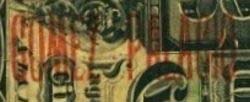The Banco Comercial de Chihuahua
On 15 March 1889, after the federal authorities took over the regulation of banking, Tomás MacManus renegotiated the Banco de Santa Eulalia’s concession with Manuel Dublan, the Secretario de Hacienda y Crédito Público. The bank was permitted to change its name to Banco Comercial de Chihuahua; its concession was limited to fifteen years and its minimum capital set at $500,000. Henceforth the bank could no longer issue legal-tender notes payable in silver with an 8% discount and such notes as remained in the bank, or in circulation, had to be withdrawn and destroyed before 30 June 1889. The bank was authorised to issue a new series of notes in the denominations of 25c, 50c, $1, $2, $5, $10, $20, $50, $100, $500 and $1,000. The old silver-backed notes (moneda de plata) were to be replaced by this new issue, with a different design and signed by the Interventor, within a period of one year.
Hence all the Banco de Santa Eulalia notes were withdrawn and burnt. On 9 June 1892 the firm of F. Macmanus é hijos asked holders of any remaining notes to present them as soon as possible at their offices at calle Ojinaga 20El Estado de Chihuahua, 11 June 1892.
The new Banco Comercial had to be reorganised within three months as a limited company with at least five shareholders. On 25 June 1889 José María Falomir, Francisco Macmanus and Ignacio Macmanus (representing himself, his brother Tomás and the other investors - Telesforo García, Henry Campbell WatersWaters was a director of the Banco de Londres y México. "Mr. H. C. Waters, the late general manager, has been connected with the Bank of London and Mexico for the past 20 years, and the success which has attended the financial operations of the bank, has been largely due to the unremitting energy displayed by him in his management of the Bank's interests (J. R. Southworth, México Ilustrado, Tomo VII, 1903, Mexico), Thomas Braníff and Cayetano M. Valadez) met at the offices of the Notario Público Ignacio Flores, formally to establish the Banco Comercial in the terms set out on the contract between Tomás Macmanus and the Secretaría de Hacienda y Crédito Público.
On 4 March 1890 the Secretaría extended by six months the time limit given in the 1889 contract to regularise the bank's affairs, and on 9 September 1890 the Secretaría extended to 15 November 1890 the period within which it had to produce the required share capital and start operations. Although Tomás and Ignacio MacManus retained directorships and stakes, shareholders in the new bank included members of Creel’s faction with José María Falomir as a director.
The bank’s offices were situated in 1887 at calle Ojinaga 18. It also had branches or agencies in Ciudad Juárez, Santa Rosalía (now known as Ciudad Camargo), Ciudad Jiménez and at Gómez Palacio in the state of DurangoEl Norte, 5 July 1900.
Ciudad Juárez: An advert for the branch appears in a newspaper in 1888Las Dos Americas, 7 March 1888. Adolph Krakauer was the manager but another report has it that the branch opened on 1 December 1897.
Santa Rosalía: the agency opened on 13 May 1898informe of Interventor Ahumada, 15 July 1898.
Ciudad Jiménez: the agency opened on 1 April 1898ibid..
Gómez Palacio: the Gómez Palacio branch was on the corner of Independencia and AllendeAGN, Comisión Monetaria/Antiguos Bancos de Emisión, caja 305. It opened on 1 April 1898informe of Interventor Ahumada, 15 July 1898 and on 4 April Miguel Torres was named the branch’s directorAGN, Comisión Monetaria/Antiguos Bancos de Emisión, caja 302, expediente Reclamaciones. This branch's notes were overprinted with a variety of overprints: 'Gomez Palacio', ‘PAGADERO EN/GOMEZ DEL PALACIO’ in a box, and various ‘GOMEZ PALACIO'.
| Type 1 |  |
| Type 2 |  |
| Type 3 |  |
| Type 4 |  |
| Type 5 |  |
| Type 6 |  |
These overprints are known on the $5, $10, $20, $50 and $100 denominations: indeed, the notes are more common with the overprint than without.
The Banco Comercial must always have been overshadowed by the other Terrazas-Creel bank, the Banco Minero, and it can be seen that its own issue of notes was remarkably small.
In early 1893, the firm of F. Macmanus e hijos failed, and because of this the offices of the Central Railroad (Ferrocarril Central) refused to accept the notes of all the Chihuahua banks. Creel and the Finance Secretary himself, José Limantour, wrote to the company but were unable to persuade them in the short term to change their policyCEHM, Colección José Y. Limantour, carpeta 16, legajo 4223 letter Limantour to Enrique C. Creel, 27 April 1893: CEHM, Colección José Y. Limantour, carpeta 16, legajo 4225 letter Creel to Charles A. Browne, 28 April 1893.
On 15 November 1897 the board, composed of Enrique Creel as President, José María Falomir as manager, Luis Terrazas, Luis Terrazas (hijo) and Máximo Krakauer, wrote to Secretario de Hacienda Limantour to inform him that they had purchased all the shares in the bank and reorganised it in conformity with the Ley General of 1897CEHM, Colección José Y. Limantour, carpeta 5, legajo 1319.
By 31 December 1899, by which time the bank had probably made all the issues that it was going to make, it had issued $1,005,000. Of these, $293,075 had been amortised, leaving $711,925 ($469,710 in general circulation and $242,215 in its offices). The American Bank Note Company printed a total of $2,050,000, so just under half these notes were never issued.
The bank finally merged with the Banco Minero on 1 July 1900El Norte, 1 July 1900. Creel had proposed the merger in February 1900 to increase the Banco Minero’s capital assets. and officials of the latter bank were in charge of the withdrawal of all its notes.
